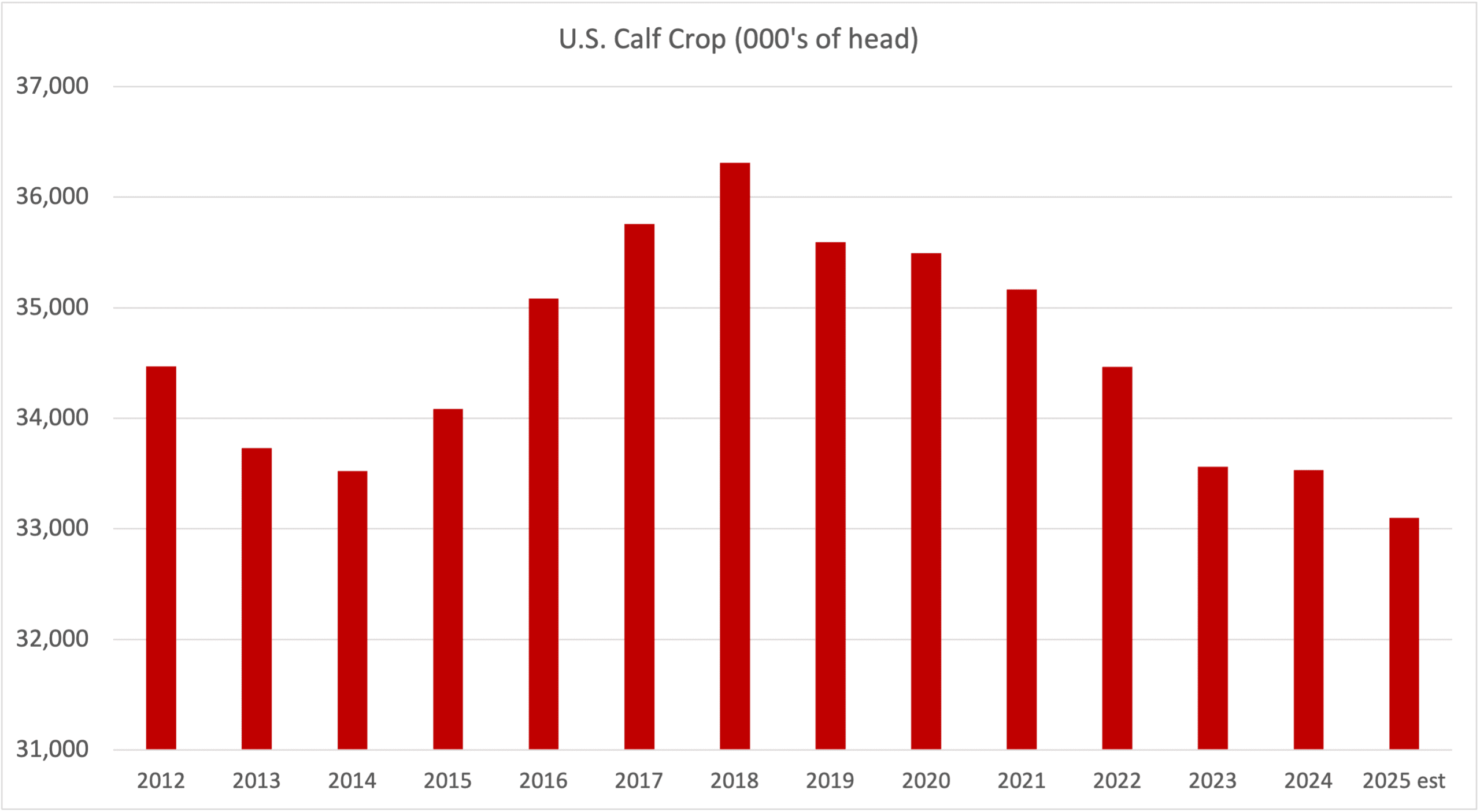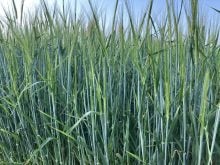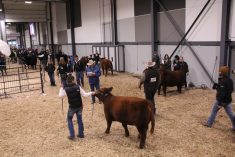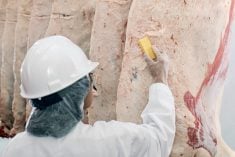The question in the headline reflects the most pertinent issue facing the U.S. beef industry. That is because the U.S. cattle herd on January 1 had shrunk to its lowest level since 1951. A fifth year of herd liquidation meant the January 1 total for cattle and calves was 87.157 million head, down 1.9 per cent or 1.684 million head from the year before. Yet there are still no signs that herd rebuilding is about to start.
The current numbers and the likelihood of even smaller numbers for another 18 months have several consequences, almost all of them negative. Ranchers will continue to receive record or near-record prices for their calves and yearlings. But they won’t be making huge margins as their operating costs will remain extremely high. Cattle feeders will struggle to make money because of the shrinking supply of cattle outside feedlots and the high prices. HedgersEdge.com estimates that the outside supply on July 1 was down 926,000 head from the prior year.
Fewer cattle means that beef processors have lost money most weeks this year. There is growing talk about several plants being forced to close if the beef herd doesn’t start to grow until next year. This also begs the question of where brand-new plants, that are being built or proposed, get their cattle from. At least eight new plants are in the works, with an avowed slaughter capacity of more than 9,000 head per day.
Read Also

Factors influencing cattle feeder market during the fall of 2025
Market analyst Jerry Klassen weighs in on live cattle markets
I have my doubts that much of this proposed new capacity will come to fruition. The industry already has surplus capacity. I calculate that the 76 largest plants, ranging from 7,000 head down to 20 head per day of capacity, have a combined capacity of 135,330 head per day. Yet the industry has seldom seen daily slaughter totals this year above 125,000 head. In other words, capacity utilization is only just above 90 per cent, and that’s only on a five-day basis. Saturday kills are almost non-existent.
USDA meanwhile continues to pledge millions of dollars in federal grants to small and independent meat processors. The goal is to help the companies expand their capacities in an effort to increase competition in the meat industry and to give farmers more options, it says. Its latest pledges total $110 million and range in value from $123,000 for a small custom meat shop in Washington state to $10 million for an expansion of a new producer-owned beef plant in Texas that plans to employ 1,500 people. The grant awards to more than 50 meat and poultry processors are meant to help alleviate the industry’s consolidation over decades that has at times decreased profits for farmers and increased prices for consumers, says Tom Vilsack, agriculture secretary.
The Texas plant is Producer Owned Beef and is a new beef harvest and processing plant near Amarillo, Texas. Its goal is to increase cattle processing capacity and competition and distribute plant profits to producer owners, who will reinvest in their businesses and communities, says USDA. Producer Owned Beef will primarily serve the region of Texas, Oklahoma and New Mexico, which ranks number one nationally in cattle-on-feed capacity but third largest in fed cattle processing capacity. USDA funds will be used to support the purchase of the facility’s equipment as part of Producer Owned Beef’s effort to significantly increase regional processing capacity by 15 per cent and national capacity by three per cent. It expects to serve 250 cattle producers and create more than 1,500 new full-time jobs, says USDA. I expect the plant to significantly increase competition for cattle in the region as it proposes to harvest 3,000 head per day.
















